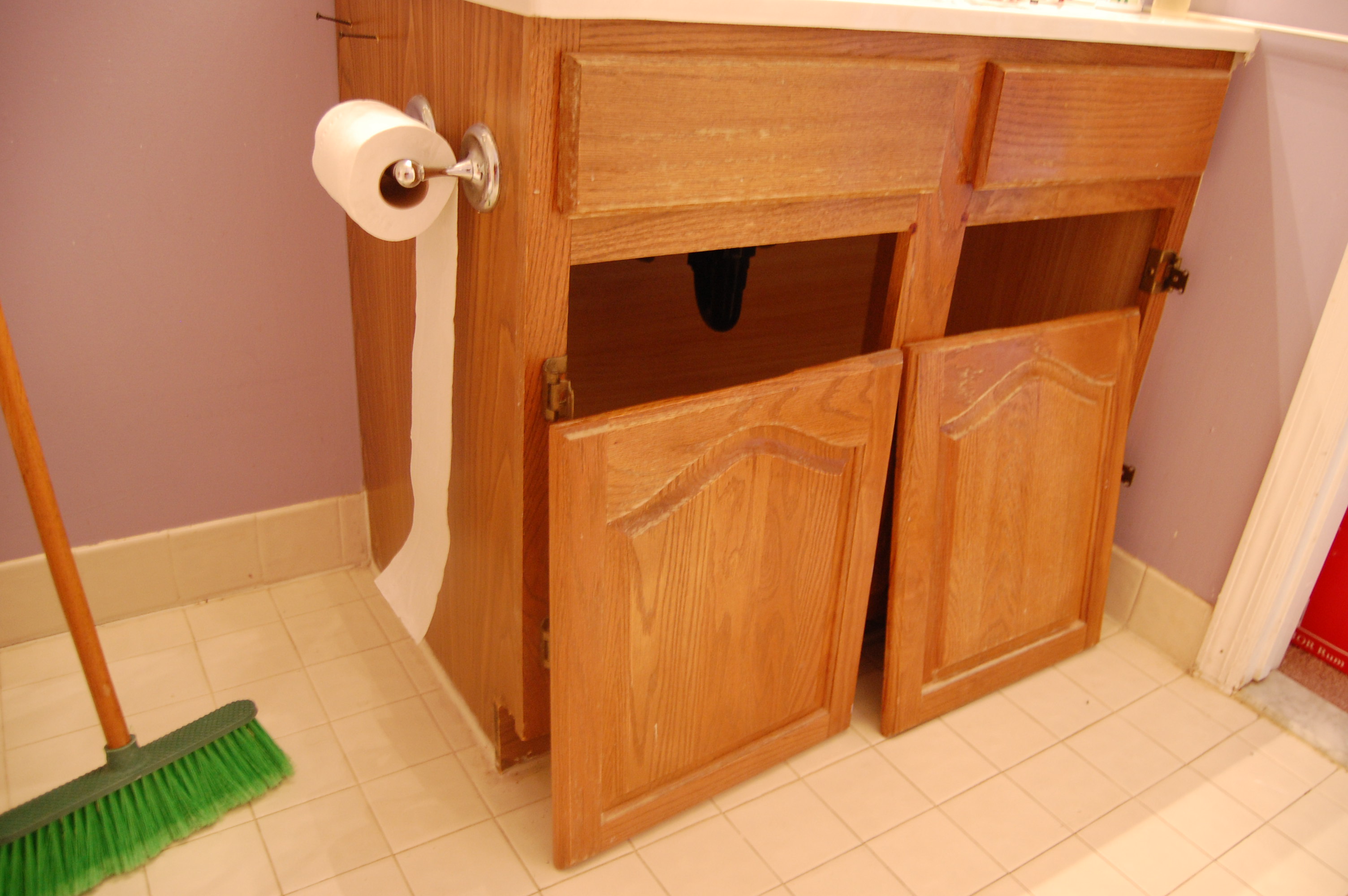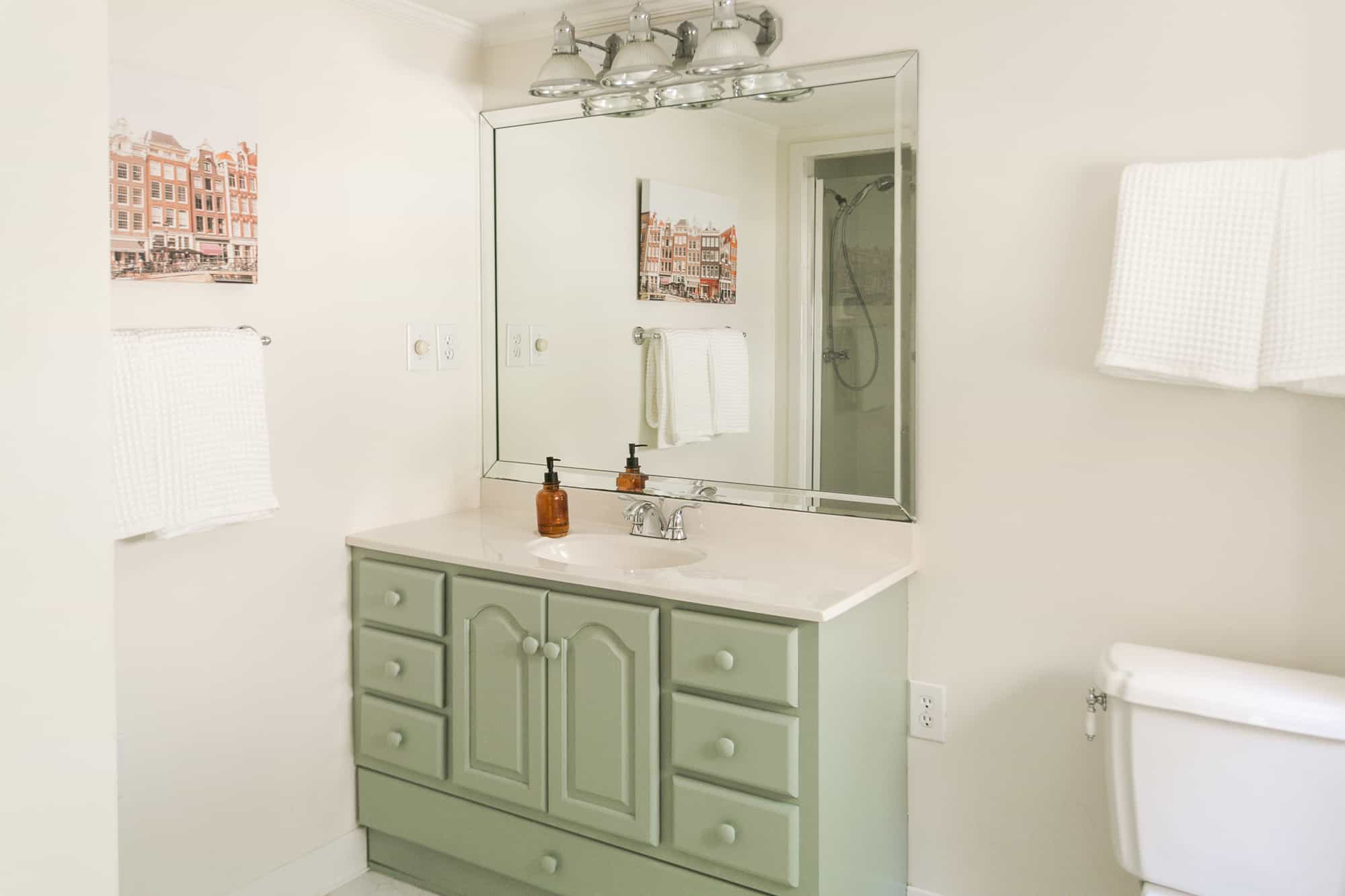Choosing Between Paint and Stain: Paint Or Stain Bathroom Vanity

So, you’re ready to give your bathroom vanity a makeover, but you’re stuck between painting it or staining it. It’s a classic dilemma, and the right choice depends on your desired look and how much effort you’re willing to put in.
Durability and Maintenance
The durability and maintenance of painted and stained vanities differ significantly. Paint offers a more durable finish, protecting the wood from scratches and moisture. However, it requires more upkeep as it can chip or peel over time, especially in a humid environment like a bathroom. Staining, on the other hand, allows the wood’s natural grain to shine through, creating a unique and elegant look. However, stained finishes are more susceptible to scratches and water damage, and they may require more frequent touch-ups.
Aesthetic Appeal
Paint provides a clean and modern look, offering a wide range of colours and finishes. You can achieve a bold statement with a vibrant colour or create a subtle elegance with a muted shade. Stained finishes, on the other hand, offer a warm and natural aesthetic. They highlight the wood’s unique grain patterns, adding character and depth to the vanity. Staining also allows you to achieve a variety of shades, from light and airy to dark and rich.
Examples of Painted and Stained Vanities
- A white painted vanity with brushed nickel hardware can create a clean and modern look in a minimalist bathroom. This option is particularly popular in smaller bathrooms as the bright white colour can help make the space feel larger.
- A dark grey painted vanity with brass hardware adds a touch of sophistication and elegance to a bathroom. The dark colour can make the vanity appear larger and more substantial, creating a sense of grandeur.
- A cherry-stained vanity with oil-rubbed bronze hardware adds warmth and character to a traditional bathroom. The rich colour of the stain complements the natural wood grain, creating a timeless and elegant look.
- A walnut-stained vanity with black hardware creates a contemporary and sophisticated look in a modern bathroom. The dark colour of the stain adds depth and dimension to the vanity, while the black hardware provides a sharp and stylish contrast.
Preparing the Vanity

Preparing your bathroom vanity for painting or staining is crucial for achieving a smooth, durable, and professional-looking finish. Proper preparation involves a series of steps that ensure the paint or stain adheres effectively and lasts longer.
Cleaning the Vanity
Thorough cleaning is the first step in preparing your vanity. A clean surface allows the paint or stain to adhere properly, preventing peeling or flaking.
- Remove all hardware, such as knobs, handles, and hinges, to ensure you can access all surfaces.
- Use a mild detergent and warm water to clean the vanity, paying particular attention to areas with dirt, grime, or grease.
- Rinse the surface thoroughly with clean water and allow it to dry completely.
Sanding the Vanity
Sanding helps to create a smooth surface for painting or staining. It also removes any imperfections, such as scratches or bumps, that could interfere with the final finish.
- Start with coarse-grit sandpaper (80-120 grit) to remove any old paint, varnish, or sealant.
- Gradually move to finer-grit sandpaper (150-220 grit) to smooth out the surface.
- Sand with the grain of the wood to avoid creating scratches or unevenness.
- Wipe away sanding dust with a tack cloth to ensure a clean surface.
Priming the Vanity
Priming is essential for creating a uniform surface for painting or staining. It also helps to seal the wood, preventing the paint or stain from soaking into the wood unevenly.
- Use a primer specifically designed for the type of paint or stain you plan to use.
- Apply the primer evenly using a brush or roller.
- Allow the primer to dry completely before proceeding to the next step.
Applying Paint or Stain

Once your bathroom vanity is prepped and ready, it’s time to get creative with the paint or stain. This is where you can really bring your vision to life and give your vanity a fresh, new look. Remember, using high-quality products and proper application techniques will make all the difference in achieving a professional finish.
Applying Paint
Painting a bathroom vanity requires careful preparation and technique. Here are some tips for a smooth and even finish:
- Choose the right paint: Opt for a paint specifically designed for bathroom use. Look for a water-based, acrylic-latex paint that is mildew-resistant and durable.
- Use a high-quality brush or roller: A good brush or roller will help you apply the paint evenly and smoothly. For intricate details, use a small angled brush. For larger areas, use a roller with a nap suitable for the surface.
- Apply thin coats: Apply multiple thin coats of paint rather than one thick coat. This allows the paint to dry evenly and prevents drips or runs. Allow each coat to dry completely before applying the next.
- Use a primer: A primer will help the paint adhere better to the surface and create a smoother finish. It is particularly important for surfaces that are previously stained or have a glossy finish.
- Sand between coats: Lightly sand the surface between coats with fine-grit sandpaper to smooth out any imperfections and create a uniform surface for the next coat.
- Apply a top coat: A top coat will protect the paint and provide a durable, long-lasting finish. Look for a water-based polyurethane or acrylic sealer.
Applying Stain, Paint or stain bathroom vanity
Staining a bathroom vanity can give it a rich, natural look. Here’s how to apply stain effectively:
- Choose the right stain: Choose a stain that is specifically designed for wood and is water-resistant. Oil-based stains are typically more durable than water-based stains, but they can take longer to dry.
- Use a clean cloth or brush: Apply the stain with a clean cloth or brush, working in the direction of the wood grain. Avoid applying too much stain, as this can lead to uneven results.
- Wipe off excess stain: After applying the stain, wipe off any excess with a clean cloth. This will help to prevent the stain from pooling and create a more even finish.
- Apply a sealant: After the stain has dried, apply a sealant to protect the wood and enhance the finish. A water-based polyurethane or acrylic sealer is a good choice.
